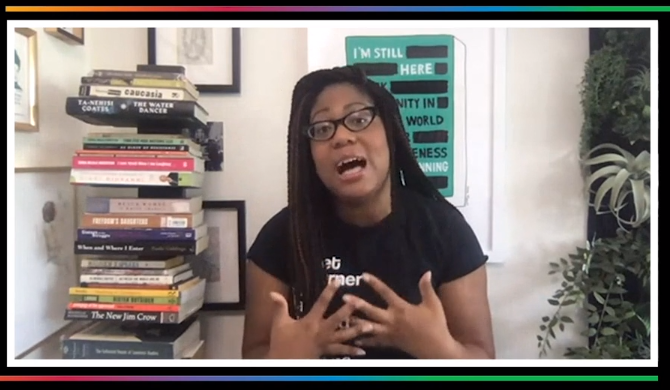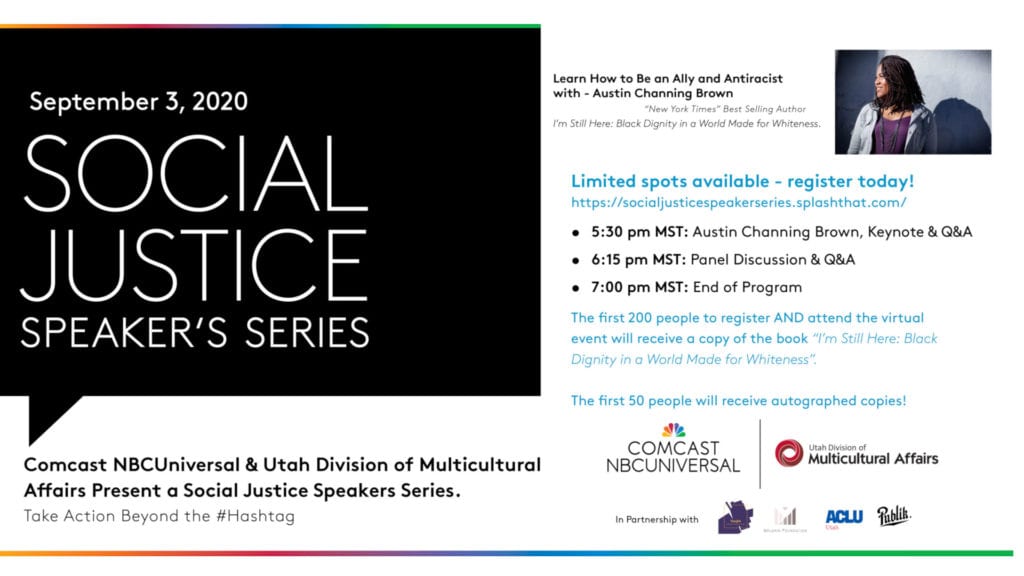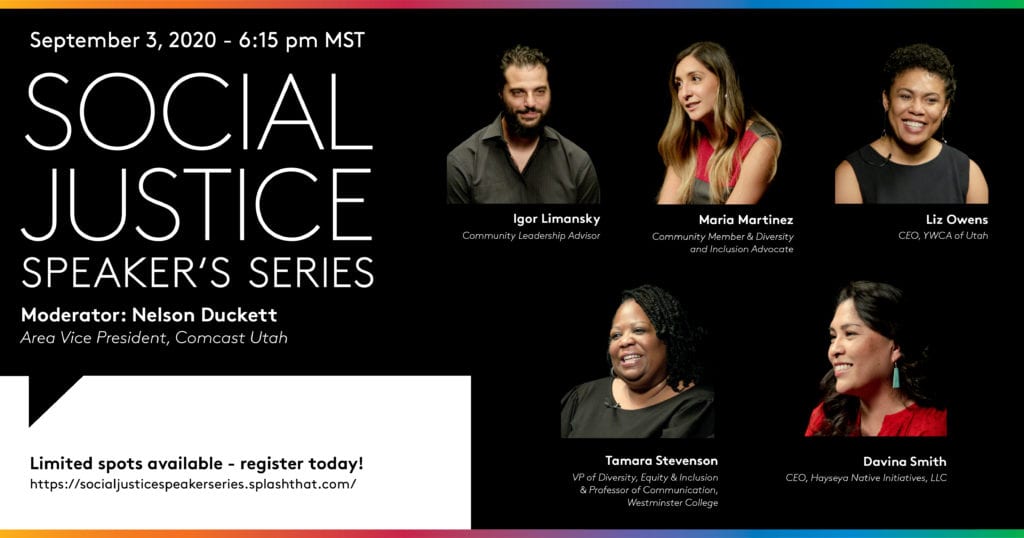Watch Part I: Social Justice Speakers Series: How to Be an Ally + Antiracist

PART I: LEARN HOW TO BE AN ALLY AND ANTI-RACIST
Presented by Comcast NBCUniversal and Utah Division of Multicultural Affairs
Over 850 people joined our first ever Social Justice Series (#SJSSBeyondTheHashtag) virtual event where we learned the difference between being a friend and an ally; the difference between being nonracist and antiracist; and how intersectionality is different from sharing intersections.
Austin Channing Brown, New York Time’s Best-Selling Author of “I’m Still Here: Black Dignity in a World Made for Whiteness” kicked off the event by exploring these topics and provided ways to create real change in the workplace and everyday life.

Download the Five Guidelines to Help You Be an Active Ally here.
- Allies aren’t nice, they’re courageous
- Nice people will try to privately offer encouragement
- Courageous allies do more than ‘nod and smile’ or offer private condolences
- True allies intentionally notice when bias and microaggressions occur and are willing to say something in the moment and confront others to start a conversation
Workplace scenario: Stacie, a Black woman, presents an idea to a group during a meeting and doesn’t receive a response or support. Phil, a white man, presents the same idea later in the meeting and the group supports the idea.
How an ally responds: (during the meeting) Team, Stacie brought this idea to the table at the beginning of the meeting. Why wasn’t it acknowledged then?
How a bystander responds: (after the meeting) Hey Stacie, I’m sorry Phil took your idea as his own. Do you want to grab a coffee and talk about it?
- I’m not the work – racial justice is the work
- Allyship and friendship are not the same thing. Allyship is not about making ‘new friends’ with Black people.
- Courageous allies make it their job to identify systemic and structural injustices
- True allies intentionally pinpoint injustices and disrupt racism as it’s happening around them
Workplace scenario: Is your leadership predominantly white, male or both? Identify and ask questions about why only one or a few departments are diverse.
- Allies are looking to support, fund and join your efforts
- Allyship is not just showing up when it’s convenient for you
- Courageous allies partner with marginalized people to collaborate on antiracism work
- True allies intentionally seek opportunities to have tough conversations about how to pursue social justice work
Personal scenario: Ask yourself if you only attend rallies and protests to post on social media—decentering from the issue detracts from the cause. Don’t just show up to post on your social media, take real action by supporting and funding real efforts for change.
- Allies are teachable and committed
- Courageous allies raise their hands and acknowledge they ‘messed up’ in saying something offensive or harmful, but are willing to learn and support now
- True allies are teachable and respond by thanking someone when they are corrected because they want to get it right
- True allies are committed and don’t stop when they’re tired or the topic stops trending
Personal scenario: If you make a joke and someone says it’s offensive, don’t become defensive. Allies want to be taught and appreciate the lesson. Use your power and influence to ensure efforts are valuable.
- You get to set boundaries of the relationship together
- Don’t get trapped into wanting to label people an ally vs. non-ally
Whether you’re a friend, ally, or somewhere in the middle, every relationship may look different. The work of antiracism is continuing to build, imagine, innovate and honor everyone’s dignity.
Learn → Listen → Act → Reflect
If you missed the event and want to learn more, you may access the videos below.
Click the image below to watch the keynote:
Click the image below to watch the panel discussion:
Share your thoughts online by using #SJSSBeyondTheHashtag.

